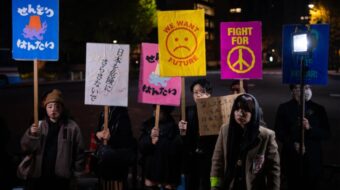The protest against poverty and disparity that started in Wall Street in New York has spread to many other cities in the United States as well as abroad.
Demands raised by the Wall Street protesters touch on various issues, including unemployment, expensive tuition and housing, peace, and environment. What they share is the following call: the 99 percent of the population can no longer accept the corruption and greed of the 1 percent.
In Japan, the wealthy are treated even more preferentially than those in the U.S. The tax rate on capital gains through stock dealings and dividends is extraordinary low in Japan. The effective tax rate on 100 million yen of capital gain is only 10% in Japan while it is 26.4 percent in the U.S.
The “super-rich” (excluding overnight billionaires) comprise 0.02% of the Japanese population, and their total financial assets amount to about 50 trillion yen, almost the same as the total in national tax revenues. The profits that they create through margin trading based on their assets are levied on only 10 percent of total profit. Meanwhile, the tax rate on interest earnings from savings accounts is 20 percent.
The internal reserves amassed by major corporations with more than 1 billion yen in capital (in April-June quarter 2011) is at a record 257 trillion yen, 2 trillion yen more than the record achieved before the 2008 global financial crisis. They comprise only 0.32 percent of all business firms in Japan. The annual salary of the chairs of Sony and Nissan is, respectively, over 900 million yen and 800 million yen.
On the other hand, during the same period, the total amount in Japanese employees’ salaries dropped by 10 trillion yen from 264 trillion. By increasingly using temporary workers as their disposable labor force and by cutting unit prices paid to subcontractors, major corporations are controlling all the wealth.
Japan also needs to build solidarity among the 99 percent of the general public in order to change the current economic system that is most heavily benefitting the top 1 percent.
This article was originally published in Akahata, the newspaper of the Japanese Communist Party.










